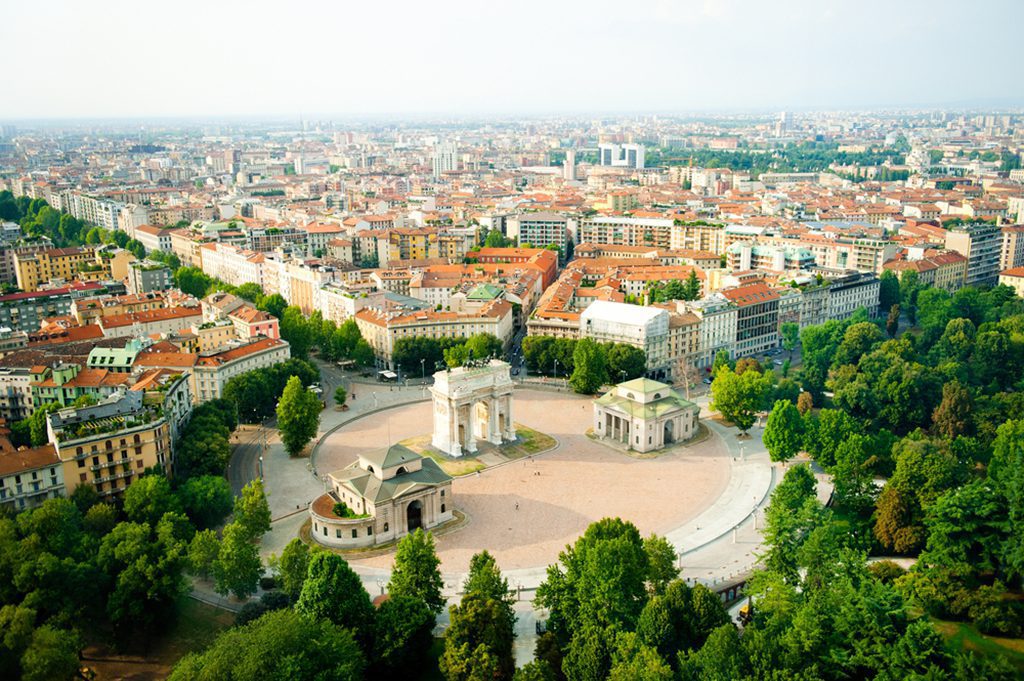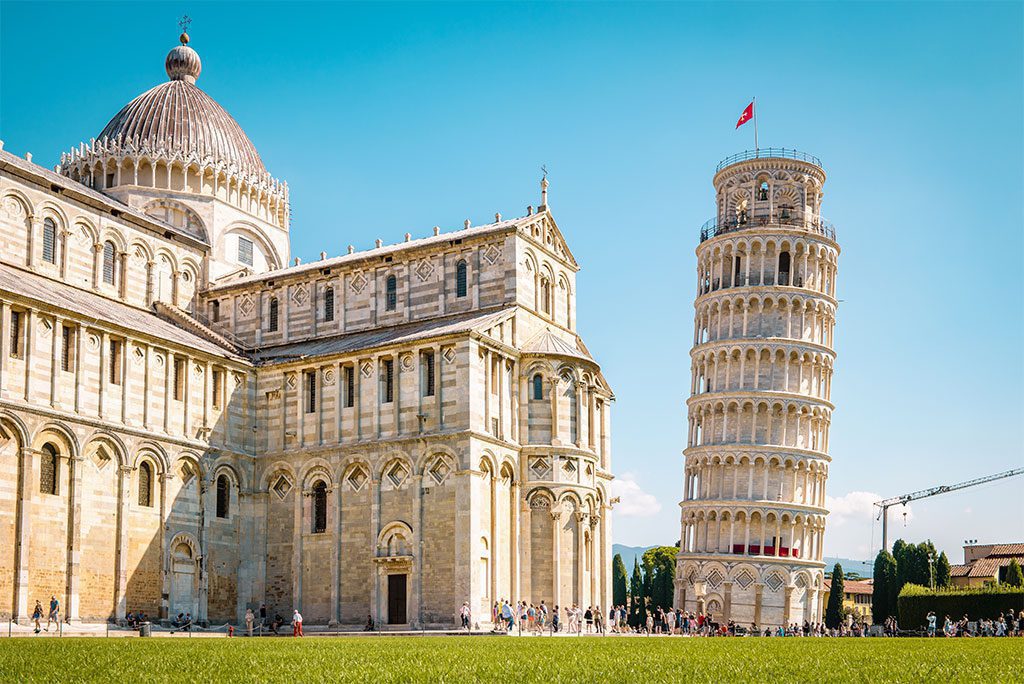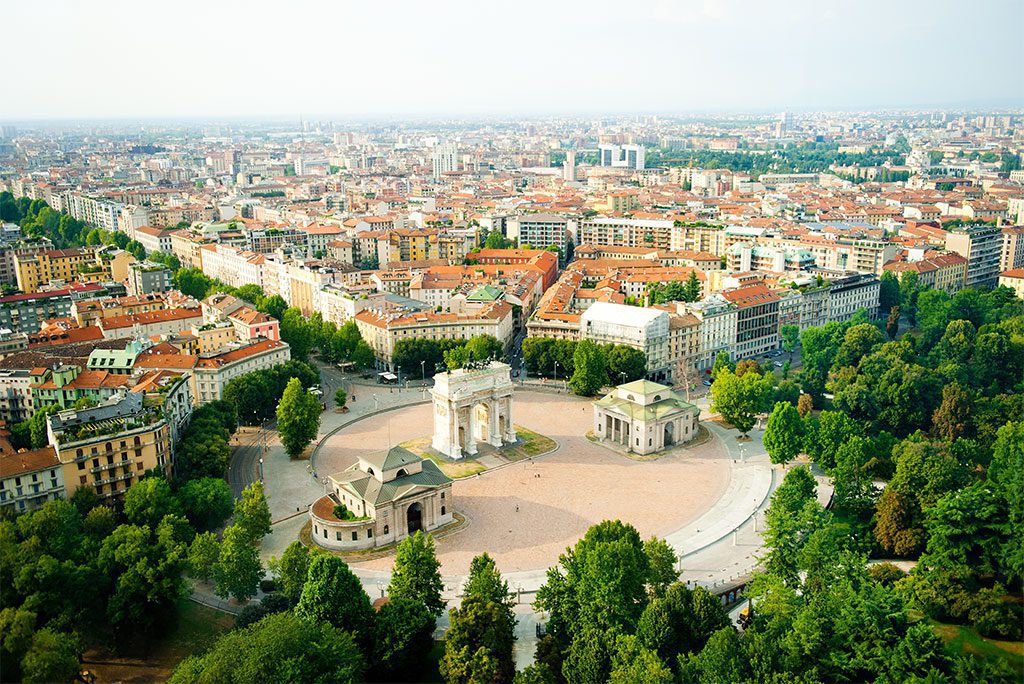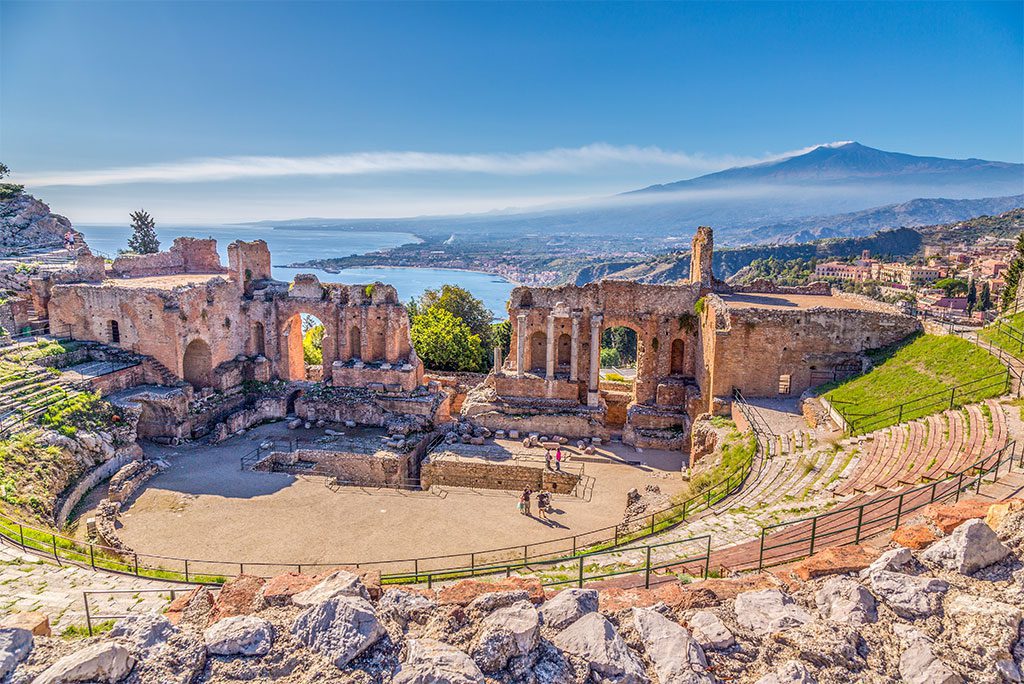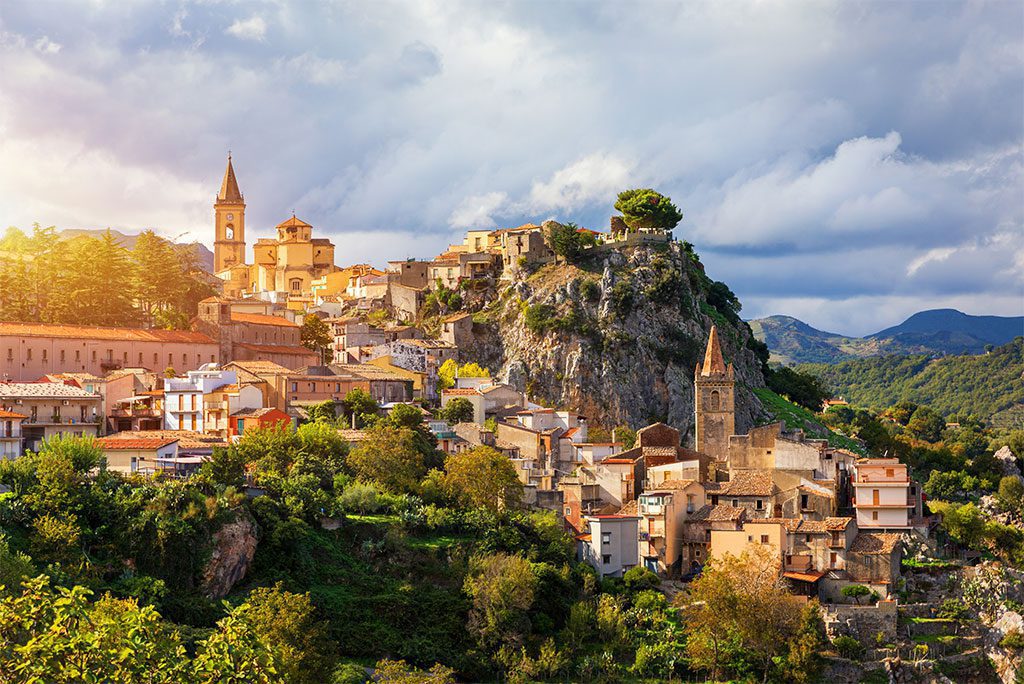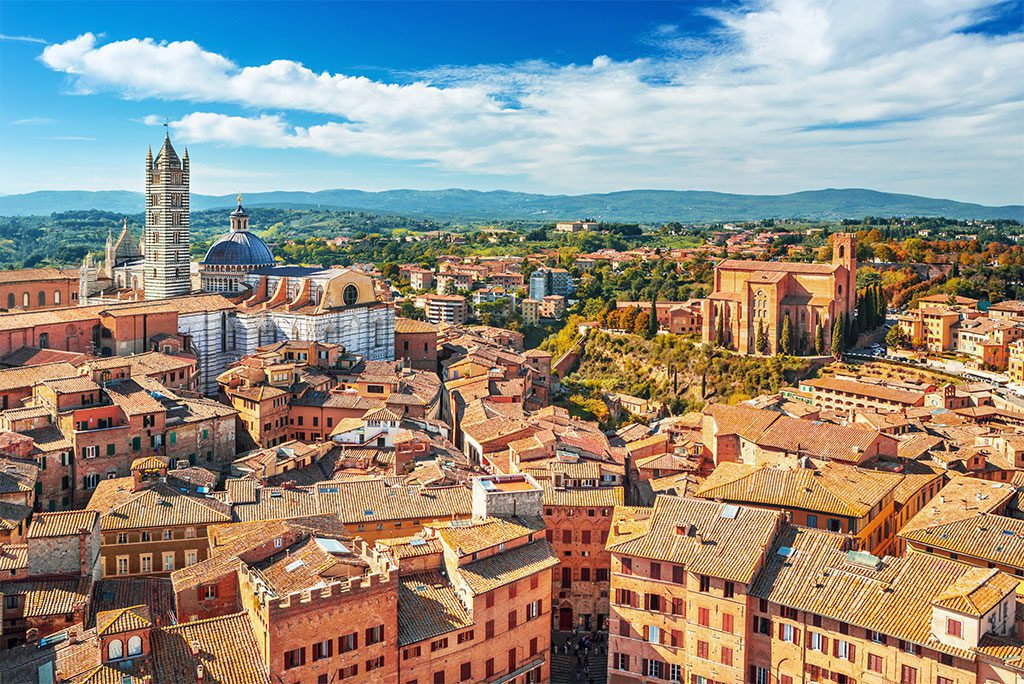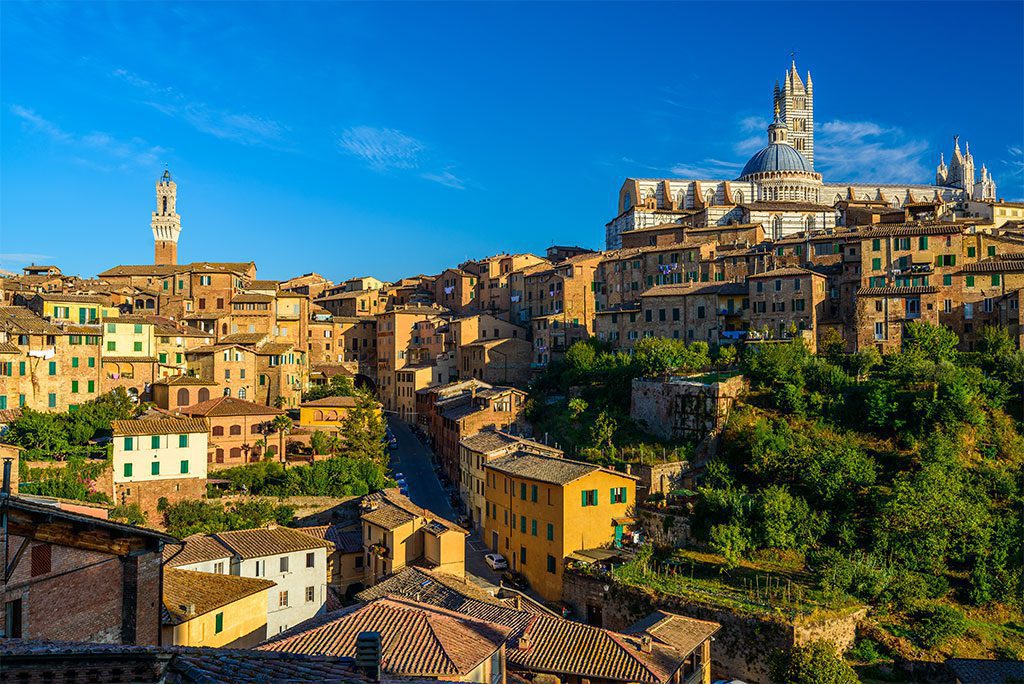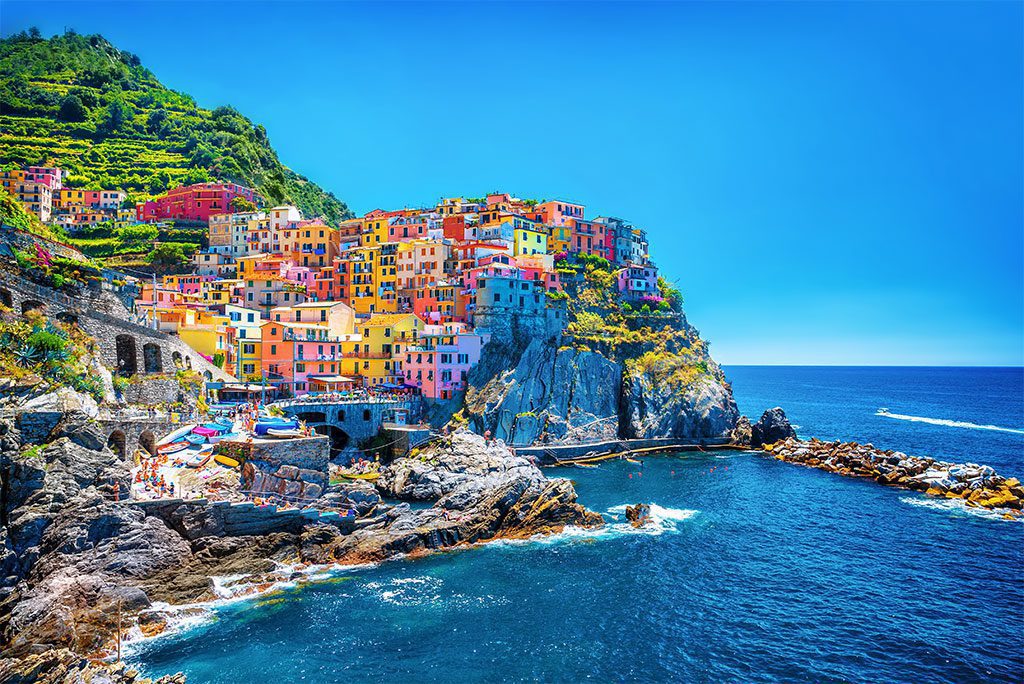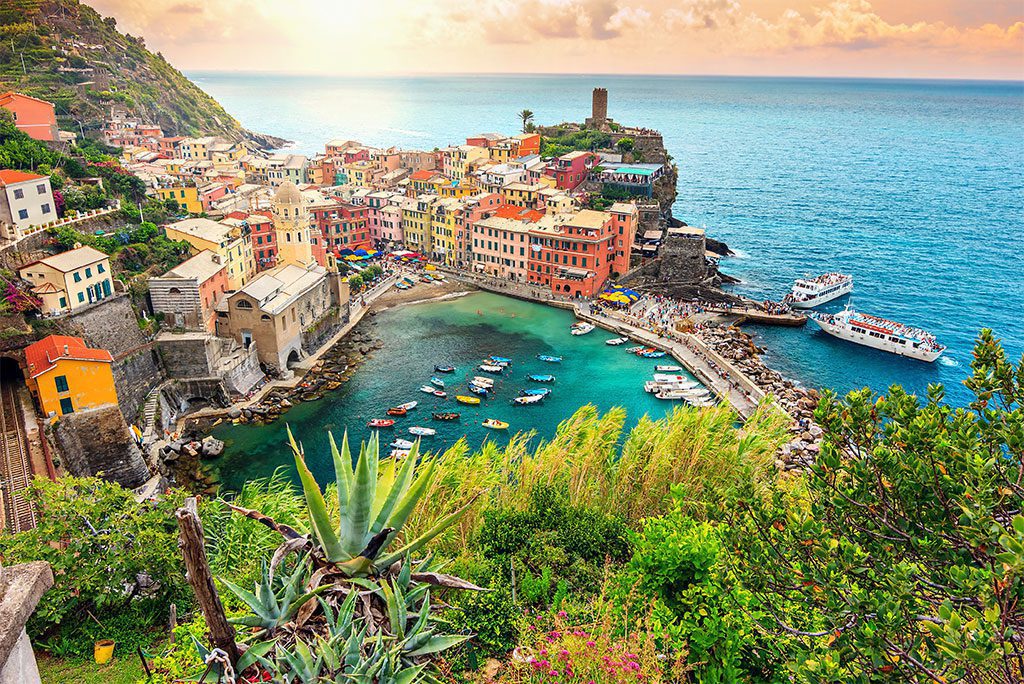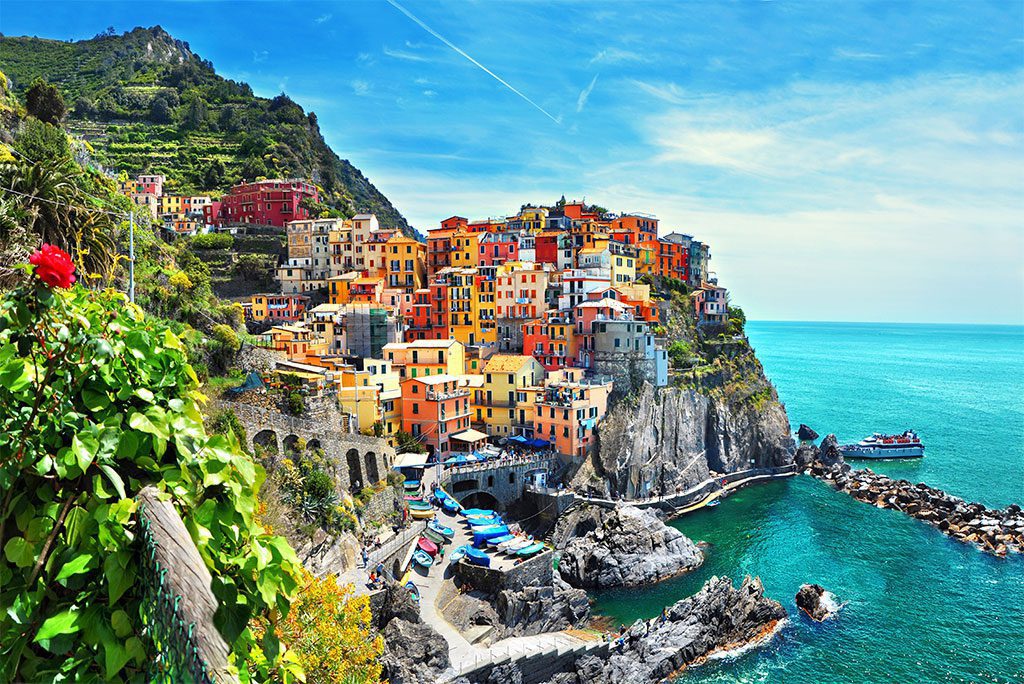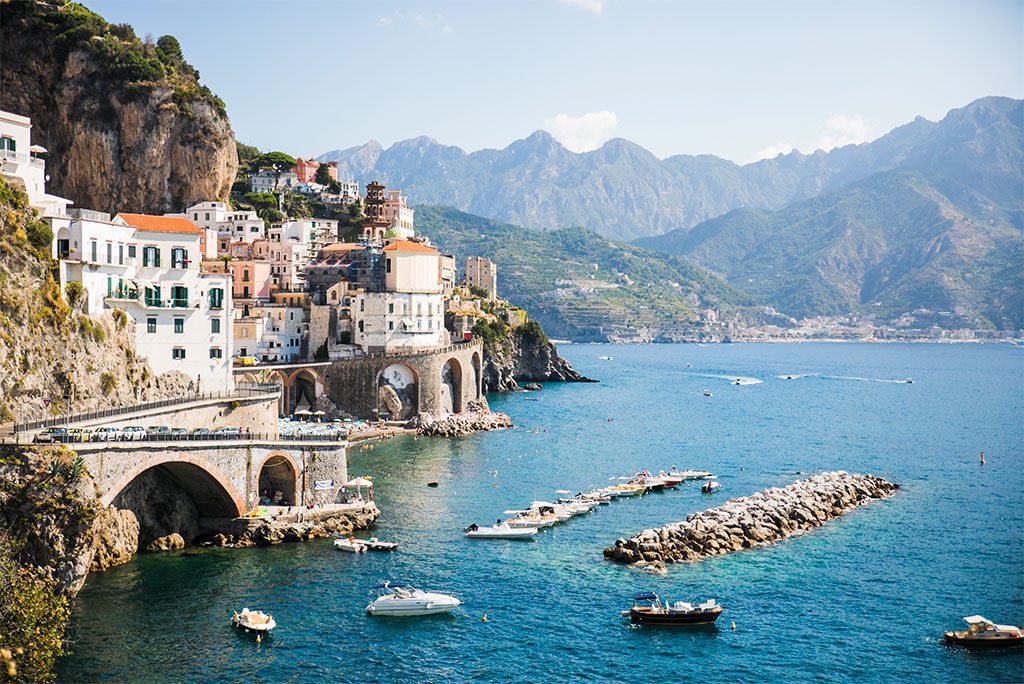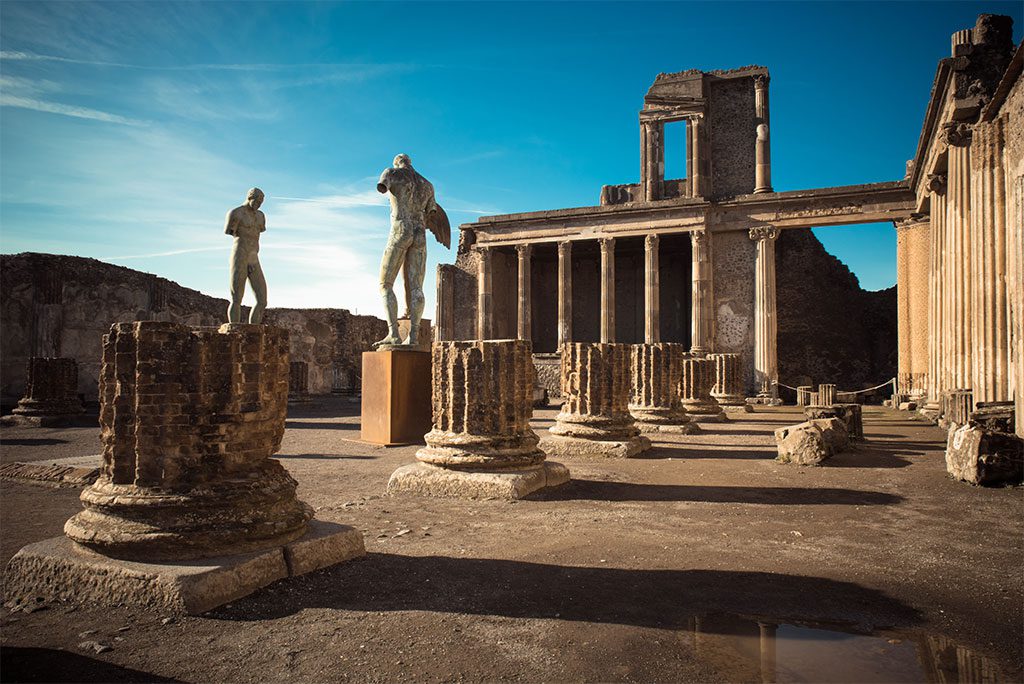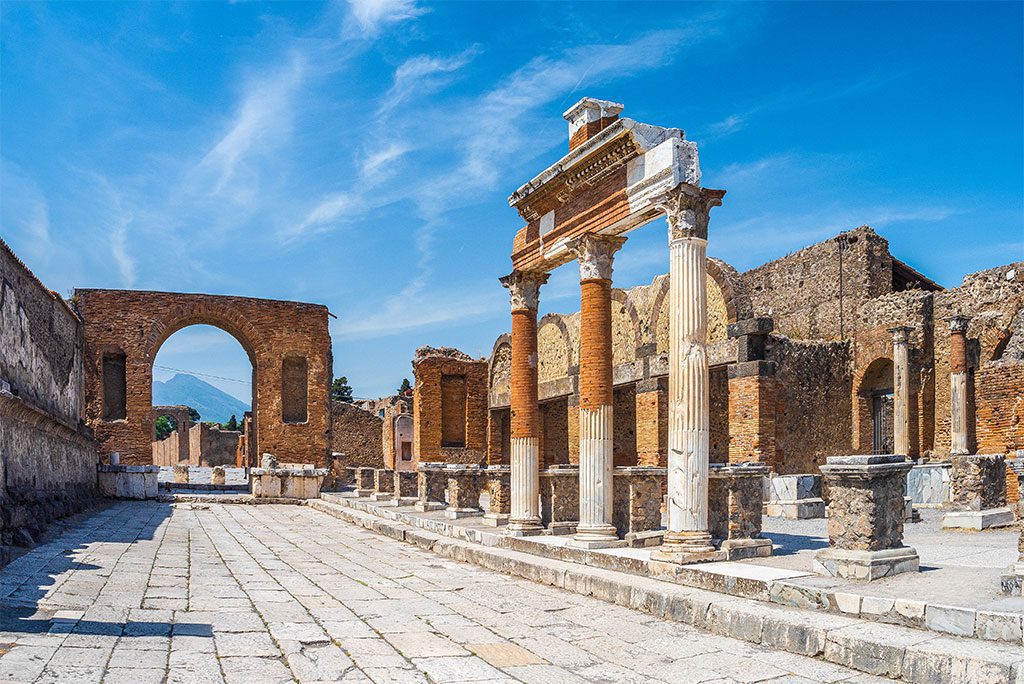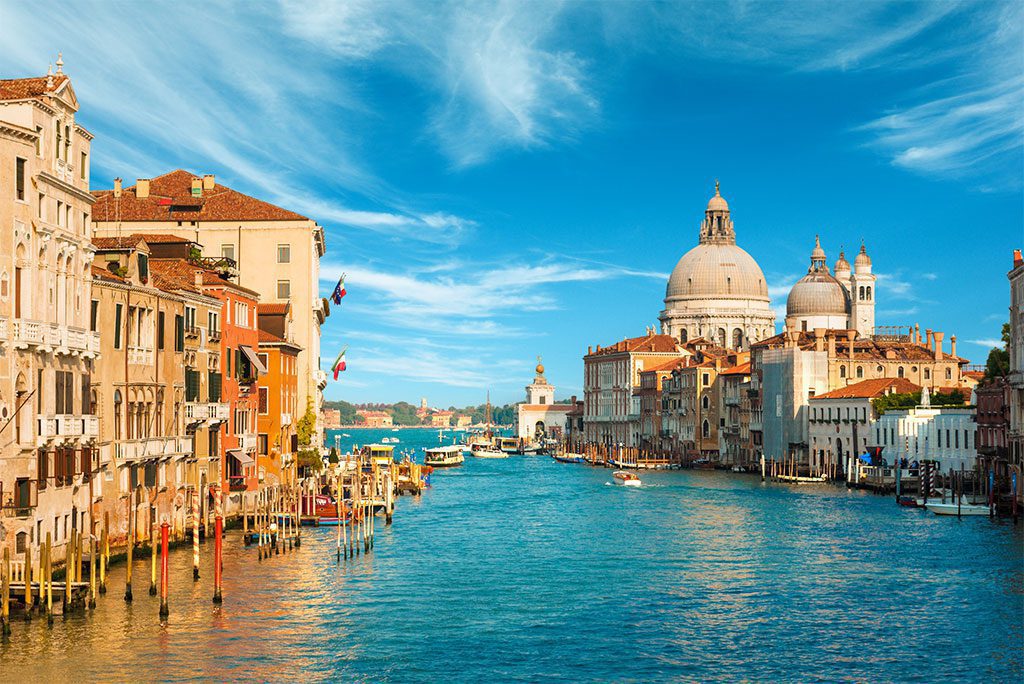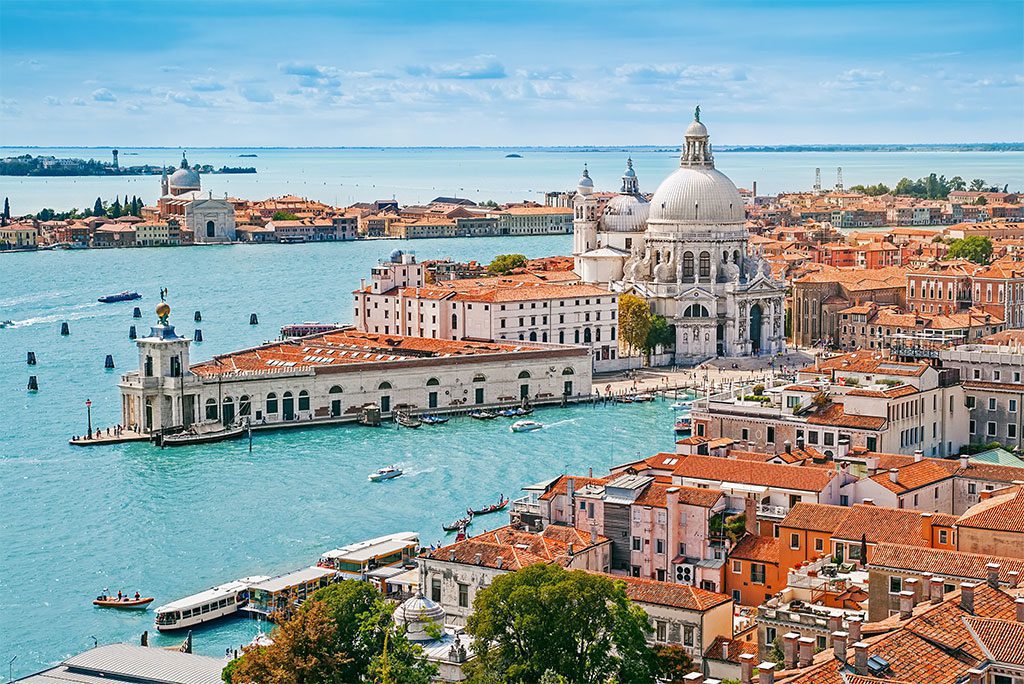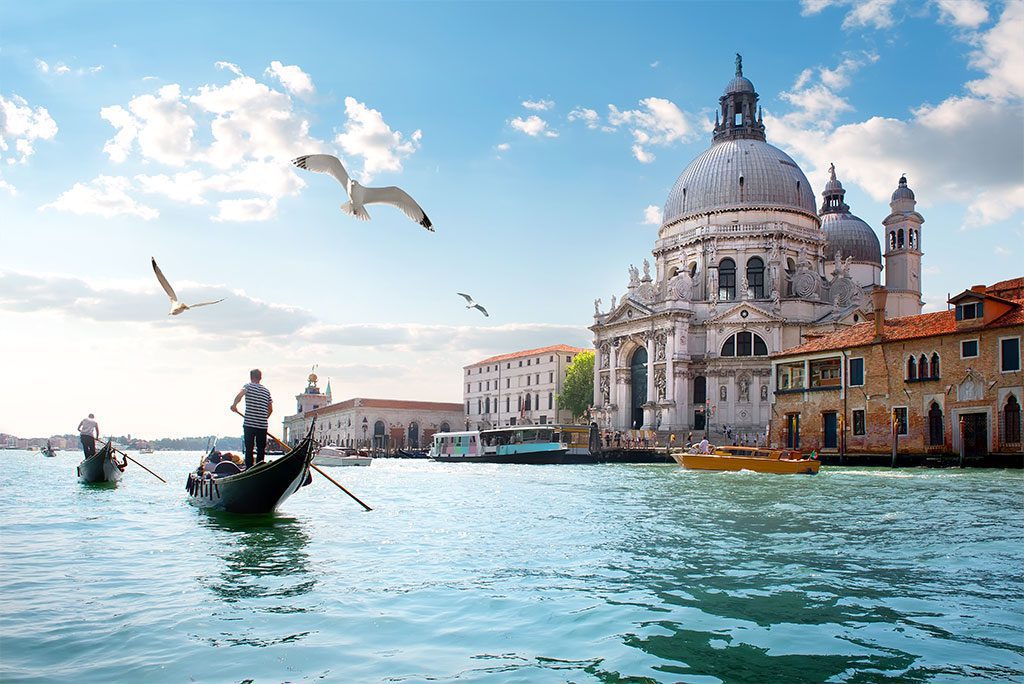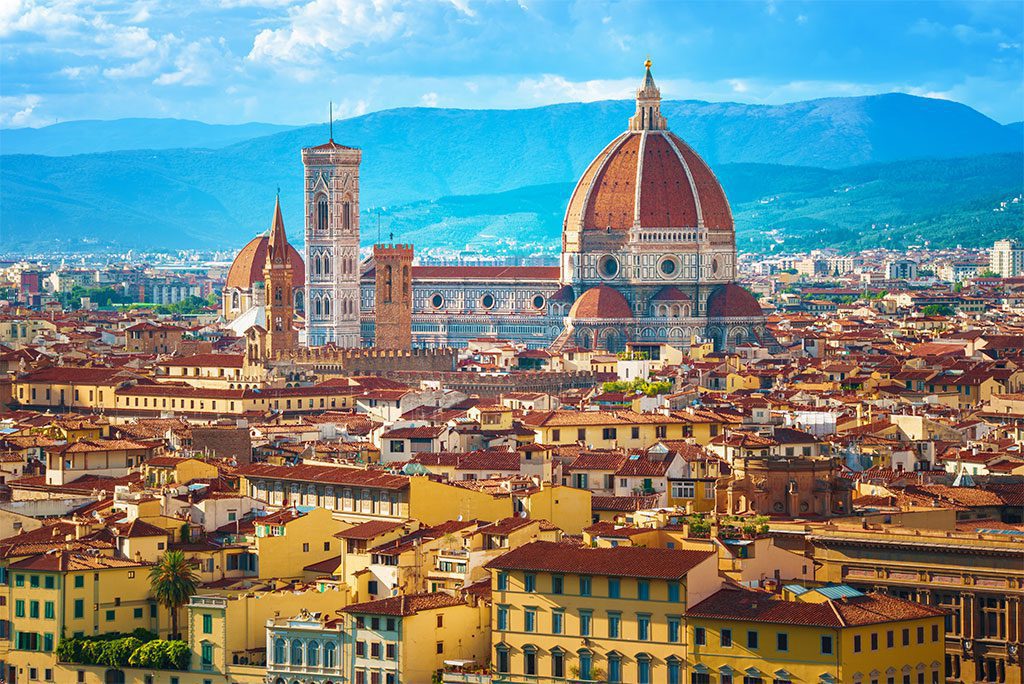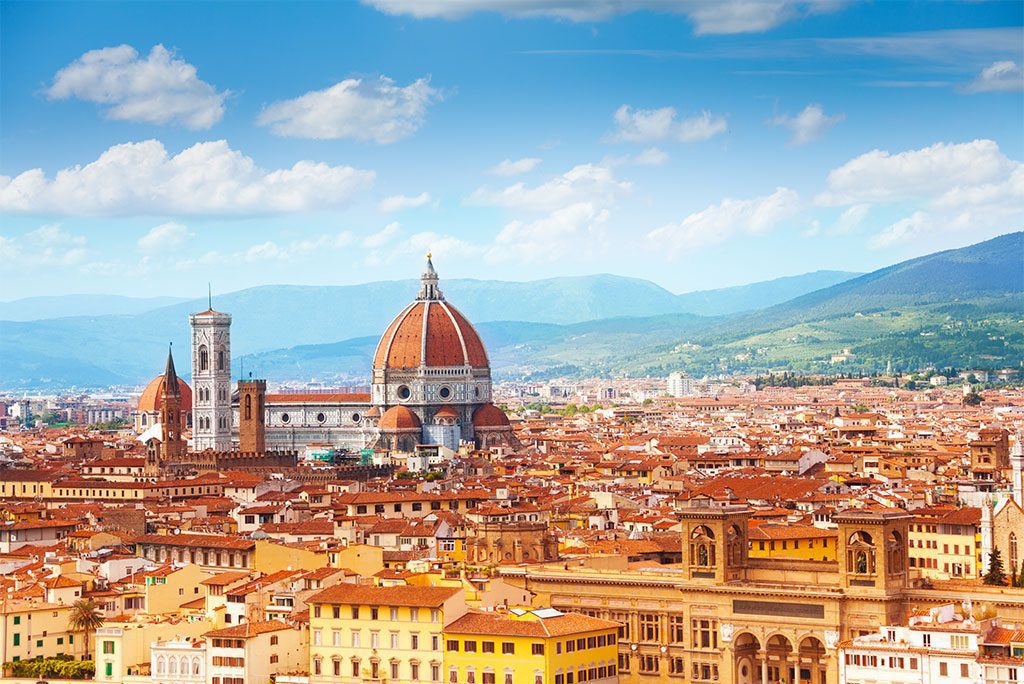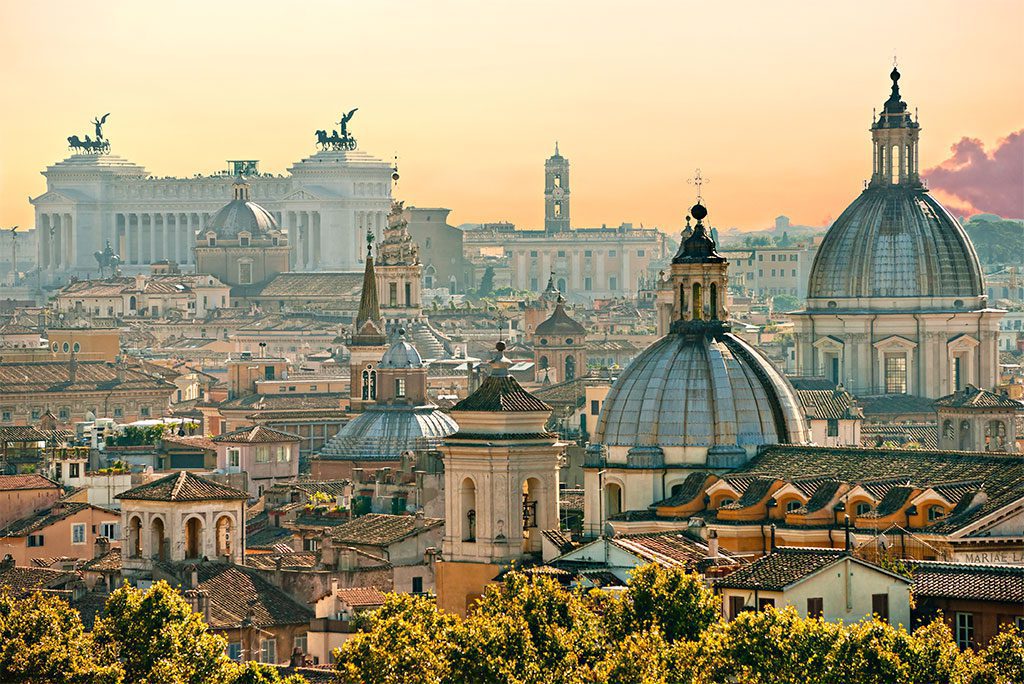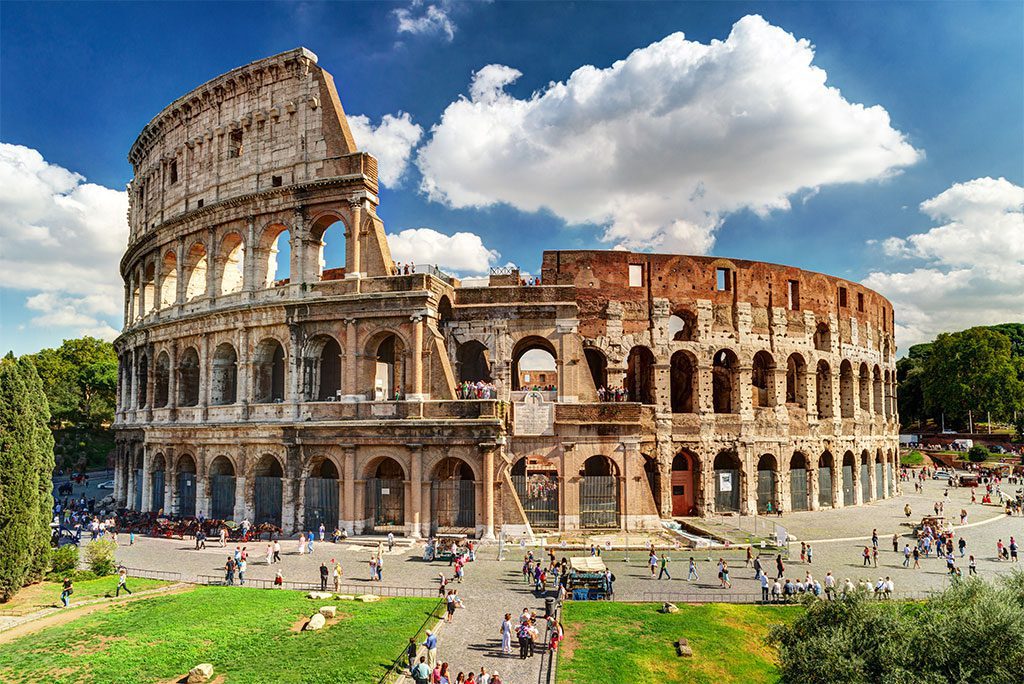Italy, the boot-shaped country in southern Europe, is a traveler’s dream destination, offering an array of attractions, rich cultural heritage, cutting-edge fashion, breathtaking scenery, and, of course, delicious food. Italians’ zest for life is evident in every aspect of their culture, from their lively language to their exquisite attire and cuisine.
A national custom in Italy, La Passeggiata, involves people taking a leisurely evening stroll to socialize, admire the scenery, and showcase their latest fashion and relationships. The stunning Amalfi Coast and the remains of Pompeii are found in the south, while the Italian Riviera and the Grand Canal of Venice are located in the north. With the highest concentration of UNESCO World Heritage sites, Italy boasts art treasures, historical monuments, and stunning coastlines, pristine alpine lakes, and picturesque mountains.
Rome, the capital, is the cultural and historical hub of Italy, home to ancient landmarks and a thriving contemporary art scene. The central area of Italy extends from Rome to the lovely wine country of Tuscany, with Florence, the cradle of the Renaissance, being one of the most visited places in all of Italy. The Colosseum, Trevi Fountain, and the Leaning Tower of Pisa are a few of the world-famous landmarks to explore.
Italy is not only about artistic heritage, but it is also a paradise for outdoor enthusiasts. Cinque Terre, Sardinia, and the Dolomites offer incredible vistas and excellent hiking trails. Visitors can enjoy museums housing priceless Renaissance works and boutiques selling the latest designer threads.
Whether you want to explore the lives of the Romans, learn about the catastrophe wrought by Mount Vesuvius at Pompeii, or just relax by one of the many Italian lakes and enjoy the Amalfi Coast’s splendor, Italy is a culturally rich country that will leave you in awe. With so much to see and do, it would take a lifetime to experience all that Italy has to offer. Use our guide to the top Italian tourist destinations to help plan your trip to this Mediterranean paradise.
12. Naples
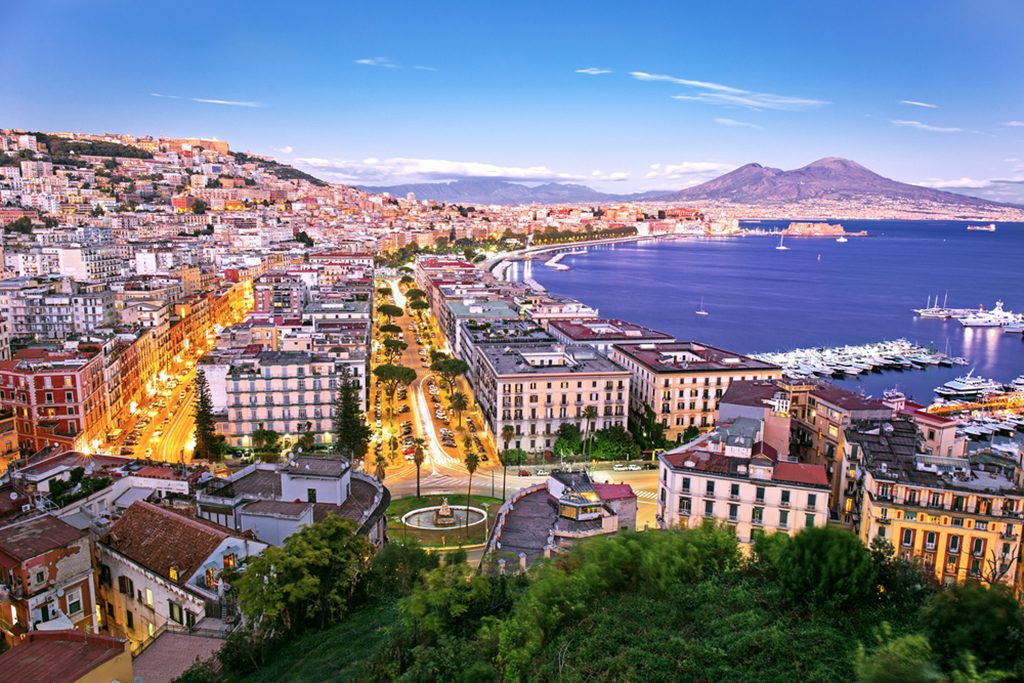
Naples, the capital of the Campania region in southern Italy, is a major metropolitan center and one of the busiest cities in the country. Naples is a great place to stay as a jumping off point for day trips to surrounding attractions like the Bay of Naples and Pompeii.
A never-ending feast for history and art enthusiasts can be found in Naples, which has one of the biggest historic city centers in the world and one of the greatest concentrations of historical monuments, Baroque churches, and Roman remains. Outside of the city itself, sightseers can take in magnificent houses, castles, and rolling countryside, as well as Roman baths and volcanic craters. The vast Piazza del Plebiscito, the Capodimonte Museum, and the National Archaeological Museum, which houses a magnificent collection of artistic works and relics discovered from the ruins of Pompeii, are among Naples’ top attractions.
Naples and its surrounding areas are the birthplace of several well-known Italian dishes, including pizza, spaghetti, and parmigiana. Neapolitans put a lot of thought into these recipes, so they often use seasonal, locally sourced ingredients. Neapolitans are also known for their delicious fresh seafood, mozzarella cheese, and various sweets, including baba, zeppole, and sfogliatella.
11. Milan
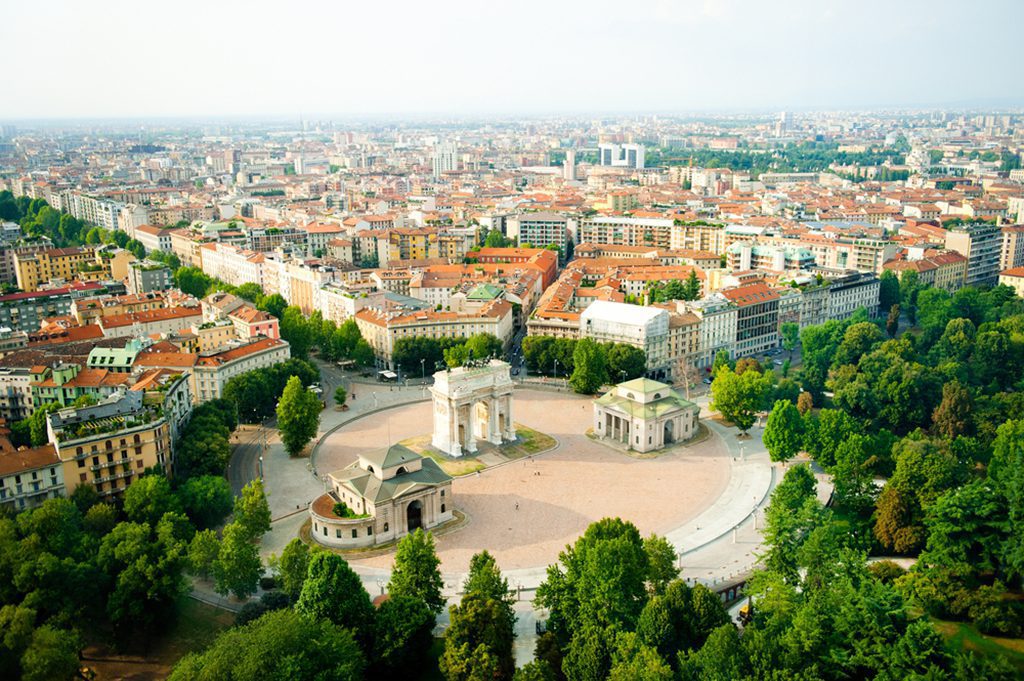
The city of Milan was almost wiped out by bombing during World War II, but it has since been rebuilt and is today a shining example of European prosperity. While the city is known for its abundance of high-end shops, Leonardo da Vinci’s The Last Supper, the La Scala Opera House, the Castello Sforzesco, and one of the world’s biggest Gothic cathedrals are all major draws.
Milan, the commercial, retail, and football mecca of Italy, is located in the Lombardy region in the country’s top northwest, not far from the beautiful Alpine and Lake District regions. Milan, with its more glitzy, modern architecture and attractions, makes Italy seem less historic than it really is.
10. Pisa
In the northwest corner of Tuscany, on the banks of the Arno River, lies the city of Pisa, which has preserved many beautiful landmarks from its medieval heyday as a trade empire. Even though the Leaning Tower is an undeniable must-see, skipping out on seeing the rest of this city in favor of only its most famous sight would be a huge mistake. The city of Pisa is known for the Leaning Tower, but it has much more to offer
Campo dei Miracoli, often known as the Field of Miracles, is one of Italy’s most picturesque squares and is home to the renowned monument. The Duomo Cathedral, the Baptistry, and the Camposanto Monument, all located in this stunning plaza, are beautiful specimens of the Italian Renaissance and showcase marble elements, sculptures, paintings, and historical treasures. The square is dotted with stores selling tourist trinkets and bakeries serving delicious biscotti.
While the Field of Miracles is indeed impressive, many visitors find that the Arno River’s natural splendor has the most profound effect on them. In order to cross the river that separates the two halves of Pisa, there are a number of picturesque bridges, including the Ponte di Mezzo. A magnificent scene of homes, landmark structures, and vegetation along the riverbanks on both sides.
The University of Pisa’s student population of 60,000 contributes to the city’s youthful energy. Throughout the year, Pisa plays host to a number of exciting cultural events, including the Luminara Festival, the Regatta of the Ancient Maritime Republics boat race, and the Game of Bridge, a friendly, medieval competition between the city’s two halves.
9. Italian Lake District
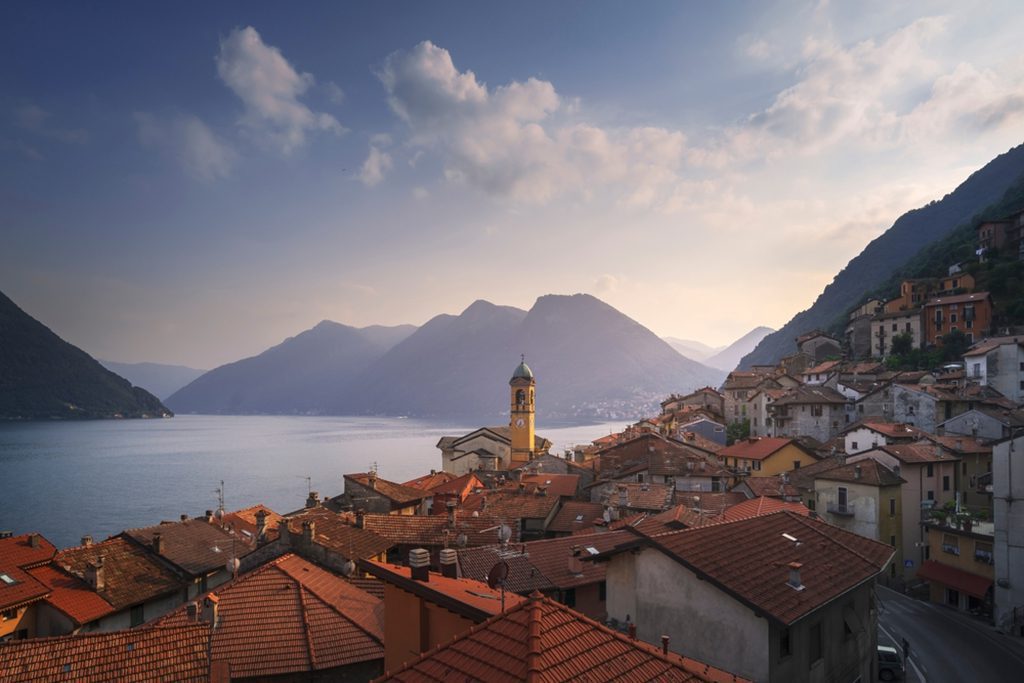
Northern Italy is home to the beautiful Italian Lake District. Most of the lakes are rather level at their southern ends, but their northern ends are mountainous since they extend far into the Alps. The Italian Lakes have been drawing visitors for over a century due to the region’s pleasant climate and breathtaking landscape.
Lake Maggiore, a long, narrow lake with plenty of flora and beautiful islands, is where we’ll begin in the west. South of the Alps, in the Canton of Ticino in southern Switzerland, is a 40-mile-long lake. The island’s most famous feature is Isola Bella, a beautiful island known for its regal house and beautiful gardens.
Lake Como’s spectacular landscape and opulent Renaissance villas have made it a popular destination for the Hollywood elite, royal families, and other wealthy tourists. Bellagio, a picturesque town with brick sidewalks and colorful mansions, is in the lake’s very center.
The biggest Italian lake, Lake Garda, is an ideal destination for anyone seeking a blend of cultural experiences, natural beauty, and outdoor recreation. Visit the lemon fields of Limone, ride the waves of Riva del Garda on a windsurfer, and delve into the history of Malcesine’s ancient castles. Sirmione, located on the southern end of the lake, is a popular tourist destination because of its proximity to ancient Roman ruins, medieval castles, and modern hot springs.
Despite being one of Italy’s less well-known lakes, Lake Iseo is home to central Europe’s biggest lake island. There are several picturesque villages and 15th-century churches spread out around Monte Isola.
8. Sicily
Sicily, the biggest island in the Mediterranean, is situated just across the Strait of Messina from the heel of Italy. Its strategic position at a crossroads for so long means that its history, culture, and cuisine are considerably different from the rest of the country.
Palermo, Sicily’s capital and greatest city, is a prime example of this, since it was established more than 2,700 years ago. Since then, several other cultures—from the Phoenicians and Romans to the Arabs and Normans—have governed there, all of which have left their own unique mark on the area’s art, architecture, and cuisine.
Additionally, Sicily is home to a plethora of significant ancient sites that have since become some of the island’s most visited landmarks. While some, like the hilltop castles of Erice, date back to the Middle Ages, others, like the spectacular remains of the Ancient Theatre of Taormina and the ancient edifices in the Valley of the Temples, date back to Ancient Greece.
Sicily’s rugged cliffs and isolated beaches are surrounded by glistening waters, while the island’s interior is dotted with beautiful agriculture and mountains. Mount Etna, the tallest mountain in Italy south of the Alps and one of the world’s most active volcanoes, dominates the landscape.
7. Siena
Located on three hills in the middle of Tuscany, Siena transports visitors back in time with its ancient architecture, cobblestone streets, and Il Palio horse race. Siena, once a prosperous city, is now one of Italy’s most visited destinations because of the preservation of many of its priceless artworks and buildings from the Middle Ages.
The Piazza del Campo in Siena is often considered to be among the best examples of a European medieval square. The Palazzio Pubblico, the Mangia Tower, and the Fountain of Joy are just a few of the famous buildings that can be found in this square’s fan form. The Duomo of Siena is another architectural marvel; it is a gorgeous black-and-white cathedral in the Italian Romanesque style, and it contains marble flooring, stained glass, sculptures, paintings, and carvings. The piazza is a wonderful location to relax, people-watch, and sample regional specialties including wine, coffee, pizza, focaccia, and gelato.
The Palio horse race, held twice yearly in the Piazza del Campo, is a big tourist attraction for Rome. Bareback races on the plaza are a 700-year-old custom in which officials from 17 different districts compete. The University of Siena is one of Italy’s oldest public universities and is renowned for its medical and legal programs.
6. Cinque Terre
Towards the coast, five colorful fishing villages hug the cliffs. These five villages and the rolling hills in between them form the Cinque Terre National Park, a major tourist attraction in Italy. Cinque Terre is a collection of five villages in the Liguria area of northwest Italy, and it is home to some of the country’s most stunning scenery, including centuries-old wine terraces.
The five villages of Cinque Terre—Riomaggiore, Manarola, Vernazza, Monterosso, and Corniglia—make up the region known as Cinque Terre, which translates to “Five Lands.” Manarola is known for its colorful boats, swimming holes, and caverns, while Riomaggiore is home to a medieval castle and a lively main street known as Via Colombo. Vernazza, Italy, is a charming village known for its vibrant nightlife despite its idyllic setting among olive orchards. Vacation resorts line Monterossa’s stunning coastline, while Corniglia’s rolling hills are covered with vines. Restaurants in the Cinque Terre villages feature regional specialties such as wine, olive oil, cheese, pasta, seafood, and fresh breads created from local ingredients thanks to the region’s thriving agricultural and fishing industries.
Cinque Terre is known for many things, but one of its best features is a network of trails that has been around for centuries and leads to some of Italy’s most breathtaking stretches of coastline. Trail No. 2, often known as the Blue Trail, connects all five of the villages and is a paved path that is appropriate for hikers of all ages.
Because the villages of Cinque Terre are so compact and manageable on foot, there are hardly any cars to be seen there. A train line that departs frequently from Genoa and La Spezia connects all of the communities, though. Serving a total of five villages.
5. Amalfi Coast
The Amalfi Coast is one of the most popular tourist attractions in all of Italy, and it is located in the Campania area in the country’s southern corner. The 30 mile long stretch of coastline along the southern side of the Sorrento Peninsula known as the Amalfi Coast is renowned for its stunning beauty thanks to its abundance of glistening coves, rugged cliffs, lemon tree gardens, brightly colored villas, and luxurious resorts.
Pebble beaches, pastel-colored houses, gorgeous mountains, waterfalls, and a 13th-century Black Madonna all contribute to Positano’s reputation as one of the Amalfi Coast’s most romantic and upscale destinations.
Amalfi, one of the major towns, has charming plazas brimming with cafes and trinket stores. Ravello, a town perched on a hill above the Amalfi Coast, is known for its exquisite gardens and art-filled mansions, as well as its vibrant art and music festival. Furore has a beautiful harbor and is known as the “Painted Town” because of the numerous homes that have murals painted on their exteriors.
4. Pompeii
Pompeii, a renowned Roman city, was buried for over 1,700 years beneath several feet of volcanic ash after the catastrophic eruption of Mount Vesuvius. Since 1748, archaeologists have been working to uncover as much of Pompeii as possible, but they still have a ways to go. It is situated close to present-day Naples.
Traveling to Pompeii is a fantastic way to learn about Roman culture and history. Visitors can wander around the historic streets to observe the ruins of stores, taverns, bakeries, brothels, baths, and private residences, as well as structures that functioned as commercial and religious centers. Some of the most noteworthy buildings are the Amphitheatre, the Forum, the Temple of Apollo, the Basilica, and the Granary Market, which holds a vast quantity of artifacts and plaster casts of people and dogs who perished during the calamity. Numerous paintings and frescoes showing eroticism, mythical figures, and hunting scenes can be found embedded in the old structures of Pompeii.
There are a number of souvenir stores and food vendors providing snacks and drinks near the Pompeii entrance. There are few alternatives for food service inside the site itself; however, there are several restaurants and cafés in the area immediately around the railway station.
3. Venice
Venice, one of Italy’s most popular cities, is situated on an island in the Adriatic Sea, in a lagoon. Venice, in northern Italy, is really an archipelago of 118 islands linked by hundreds of stunning bridges and many canals. The Grand Canal is the most well-known and serves as the dividing line between the northern and southern halves of the city. Venice is one of the world’s most romantic cities due to its picturesque rivers and medieval buildings.
Saint Mark’s Square and Basilica, the Doge’s Palace, and the Rialto Bridge are just a few of the many breathtaking sights that make a trip to Venice, Italy, well worth the crowds and high prices. Taking a gondola ride along the Grand Canal is a classic Venetian experience. Even so, a trip on a vaporetti along the city’s tranquil side canals is a delightful alternative.
The city of Venice is home to one of Italy’s most vibrant Carnival celebrations, during which the streets are flooded with revelers wearing elaborate costumes and masks and the Grand Canal is crowded with fleets of painted boats and gondolas. An exquisite carnival mask is a popular souvenir to take home from Venice.
People get around Venice by walking or taking one of the water taxis along the canals, since the city’s narrow streets are off-limits to cars. In the spring and fall, Venice often encounters high water, so travelers should be aware of this.
2. Florence
Florence, the capital of Tuscany, is sometimes likened to a gigantic open-air museum due to the abundance of art and architecture that can be seen there. Florence is widely recognized as the beginning of the Renaissance in Italy. It is also credited with the development of many influential artists, inventors, writers, scientists, and explorers, as well as the creation of opera and the florin currency, both of which helped pull Europe out of the Middle Ages. More than that, the Medici family, which originated in Florence and produced several kings and popes, had far-reaching cultural, economic, and political effects.
There are several museums, beautiful churches like the dome-topped Santa Maria del Fiore, and world-renowned art galleries like the Uffizi and Pitti Palace that house Florence’s vast collection of artistic treasures. Piazza della Signoria, the main square, has stunning architecture and works of art by renowned artists such as Cellini’s Perseus with the Head of Medusa, Ammannati’s Fountain of Neptune, and Michelangelo’s Statue of David.
The best method to view the city’s biggest attractions is on foot. The Ponte Vecchio, an attractive bridge crossing the Arno River and home to many jewelry stores, is among the city’s most popular walking destinations. Markets in Florence are another great spot to stroll. The San Lorenzo markets are among the best places for visitors to find fresh produce and handcrafted goods made in the area.
1. Rome
Rome, the ancient capital of the Roman Empire, is now the administrative center and official capital of Italy. Rome, the capital and largest city of Italy, is located in the province of Lazio in the country’s center. Rome has been a cultural, political, and religious hub for more than 2,500 years, thanks largely to the city’s preservation of old Roman architecture and the Vatican City.
The historic landmarks of the city, including the Colosseum, the Forum of Augustus, Capitoline Hill, and the Roman Forum, are clustered together in the Colosseo area, one of Rome’s five main neighborhoods. Old Rome is located on the city’s periphery and is home to the Pantheon and other spectacular churches, plazas, and Renaissance architecture. St. Peter’s Basilica, the Apostolic Palace, and the Sistine Chapel are among the most recognizable structures in all of the Vatican.
Rome is a city where a month-long trip is not enough time to see everything. Nonetheless, travelers can see the best that the city has to offer by participating in a hop-on, hop-off bus trip. Tourists can get on and off the bus at any of the stops made at key attractions and top museums.


